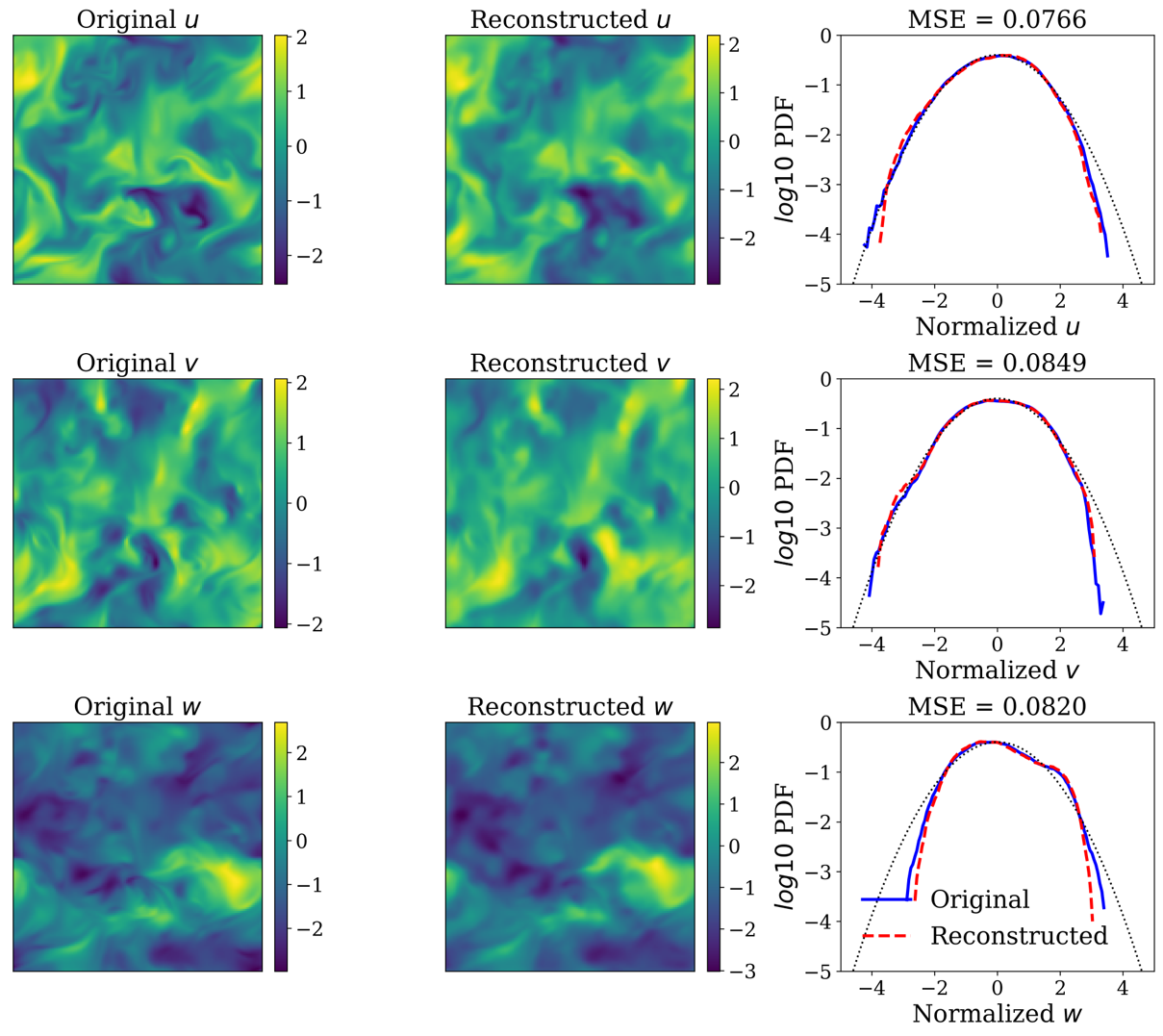Emulating Spatio-Temporal Realizations of Three-Dimensional Isotropic Turbulence via Deep Sequence Learning Models
We use a data-driven approach to model a three-dimensional turbulent flow using cutting-edge Deep Learning techniques. The deep learning framework incorporates physical constraints on the flow, such as preserving incompressibility and global statistical invariants of velocity gradient tensor. The accuracy of the model is assessed using statistical and physics-based metrics. The data set comes from Direct Numerical Simulation of an incompressible, statistically stationary, isotropic turbulent flow in a cubic box. Since the size of the dataset is memory intensive, we first generate a low-dimensional representation of the velocity data, and then pass it to a sequence prediction network that learns the spatial and temporal correlations of the underlying data. The dimensionality reduction is performed via extraction using Vector-Quantized Autoencoder (VQ-AE), which learns the discrete latent variables. For the sequence forecasting, the idea of Transformer architecture from natural language processing is used, and its performance compared against more standard Recurrent Networks (such as Convolutional LSTM). These architectures are designed and trained to perform a sequence to sequence multi-class classification task in which they take an input sequence with a fixed length (k) and predict a sequence with a fixed length (p), representing the future time instants of the flow. Our results for the short-term predictions show that the accuracy of results for both models deteriorates across predicted snapshots due to autoregressive nature of the predictions. Based on our diagnostics tests, the trained Conv-Transformer model outperforms the Conv-LSTM one and can accurately, both quantitatively and qualitatively, retain the large scales and capture well the inertial scales of flow but fails at recovering the small and intermittent fluid motions.
PDF Abstract


